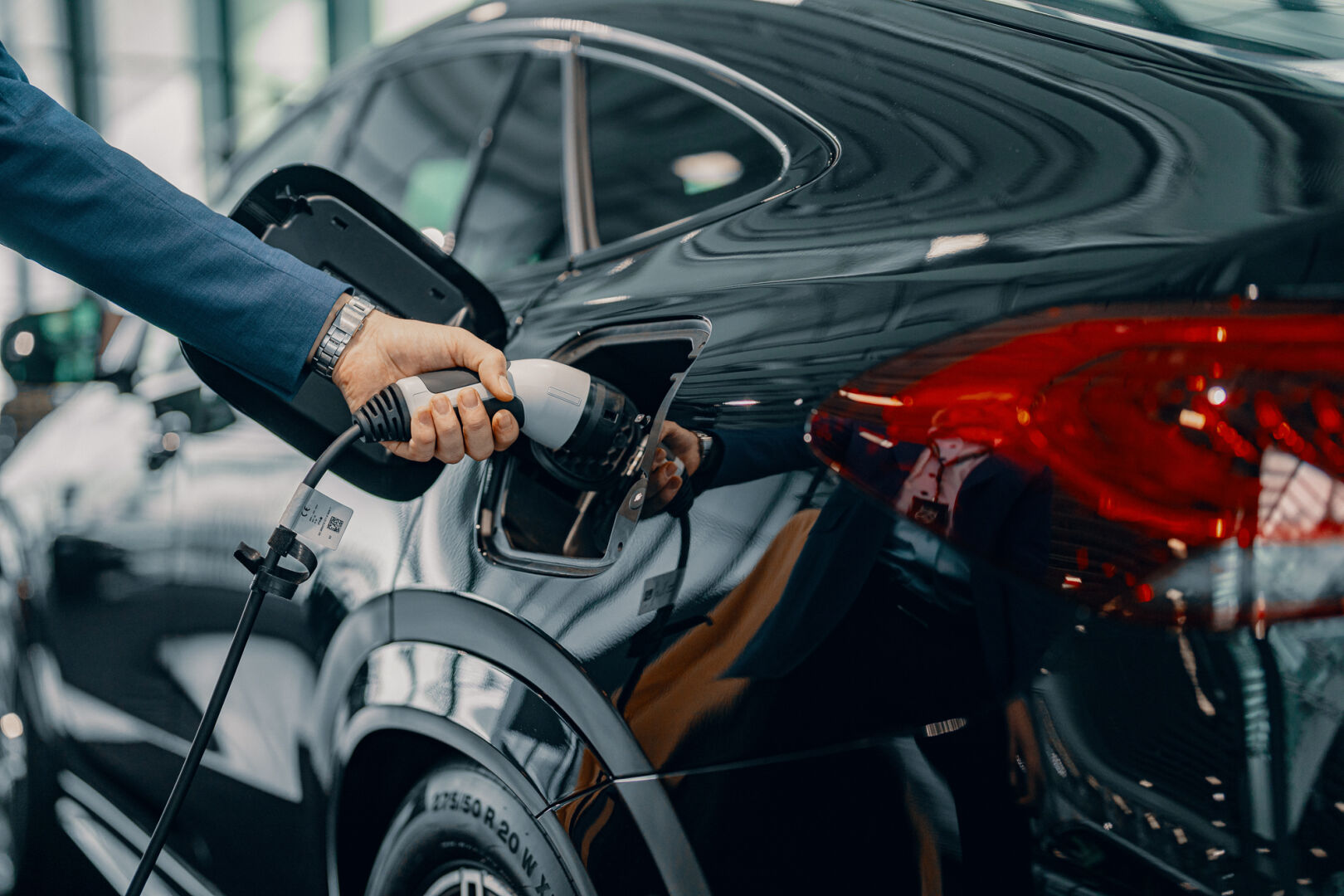

Marketing Manager Affe Tavasti and Product Manager Timo Lehto at Veho Finland assure you that you can drive an electric car for long distances without any worries. You can plan your route in advance, even from the comfort of your own home, at least if you're driving a Mercedes.
"Once you've activated the Mercedes charging services, the car will plan the journey for you," says Tavasti. "The app takes the best and fastest charging points into account first, and the user can choose whether only the charging points covered by Mercedes me Charge are taken into account or also all other charging points."
"The operating distance of an electric car is usually longer than the distance the driver can drive in one go - and what is even worth driving in one go for safety reasons. A coffee break is usually taken after 2-3 hours of driving. The route planned using the Mercedes me app suggests suitable charging points and charging times, and at the same time breaks the journey," says Lehto. If the suggested charging point doesn't fit in with your plan, the car will automatically find and suggest the next point.
Lehto says that if you're on a journey for several days, you can use the app to plan the next day's route, even at the end of the day. Once the route has been entered into the car's navigation system, the car will also preheat the battery to enable fast DC charging.
It is best to charge your electric car at the end of the day while the battery is still warm. Charging performance is better in a warm battery than in a cold one. Here again, the battery pre-conditioning function is a useful feature. Especially in cold weather, the battery does not warm up sufficiently during driving to ensure optimum charging performance.
Battery charging time depends on the car's charging capacity, the charger, and the conditions. "The key question is how many extra kilometres you can cover with a given charging time," says Lehto.
Charging time per 100 km of driving, with an average electric vehicle consumption of around 20 kWh/100 km:
Approximately 2 hours on a normal AC charge at 11 kW
About 12 minutes for fast charging at 100 kW power
Approximately 6 minutes for high-power charging at 200 kW.
These estimates assume a battery temperature of about 25 degrees Celsius.
Is it worth to charge your battery full every time you get the chance?
"Two quick charges are better than one long charge," says Lehto. Typically, the last few percent of the charge will take longer than the first few percent. For example, charging from 10 percent to 80 percent can take half an hour and the remaining 20% another half an hour," says Lehto. With two fast charges, travel time speeds up.
Sometimes electric cars may have bigger tyres and rims than internal combustion engine cars. Lehto points out that the main cause of tyre wear is usually in the mirror. In high acceleration electric cars, the higher mass and torque of the car can affect tyre wear, but driving style is the most important factor. Lehto has noticed that electric cars are making people more aware of economical driving, and even 'hooking' them to reach new energy-saving records.
The battery warranty of an electric car is generally 8 years or 160 000 km, with some models offering up to 10 years or 250 000 km.
In northern conditions, the effect of frost is a concern for many drivers.
"Yes, frost affects the operating range and energy consumption of an electric car," says Lehto. He adds that since electric vehicles do not produce as much waste heat as an IC engine car, the heating energy has to come from somewhere. "It comes from the vehicle battery. You can, for example, preheat the car before setting off while it is connected to the charger. You can also schedule the start time in advance using a mobile app."
The car heats up the interior and the battery is full, and the heating energy is then taken from the mains power. In this case, the temperature inside the car only needs to be maintained while driving. Lehto says that in cold conditions, the operating time is significantly affected by the length of the journey.
"When you drive for 15 minutes and the car cools down in between, energy consumption can double in sub-zero temperatures compared to the summer season. The effect is smaller on longer runs," says Timo Lehto.
"Mercedes has been committed to reducing emissions since the factory. Climate issues are important to us," says Affe Tavasti, Marketing Manager at Veho Finland. Mercedes-Benz aims to make the entire value chain of new vehicles carbon neutral by 2039, and all passenger car and battery assembly plants operated by Mercedes-Benz AG have been converted to climate-neutral production by 2022. "Environmental impact reports already exist for all Mercedes electric car models," adds Tavasti.
Electric cars have simpler technology than internal combustion engines and are more energy efficient to drive.
"Electric cars are up to 70% more efficient than internal combustion cars," says Tavasti, giving an example. Driving an electric car produces no carbon dioxide and other exhaust emissions, such as nitrogen oxides and fine particles. "Owners can also choose where the electricity they buy comes from."
The production of raw materials for electric vehicle batteries has a climate impact, which is being reduced by recycling materials and improving battery technology. For example, it has already been possible to reduce the use of some earth metals. Recycled vehicle batteries are designed to be used, for example, as backup power sources in buildings. But batteries have not come into circulation as quickly as expected, Tavasti adds.
The new EU battery regulation obliges the use of recycled raw materials in the production of automotive batteries. The regulation, which came into force in 2023, requires a recycling rate of 90% for the main minerals cobalt, nickel, and copper by 2025 and 95% by 2030. Under the battery regulation, the recycling rate for lithium will rise to 50% next year and 80% by 2030.
